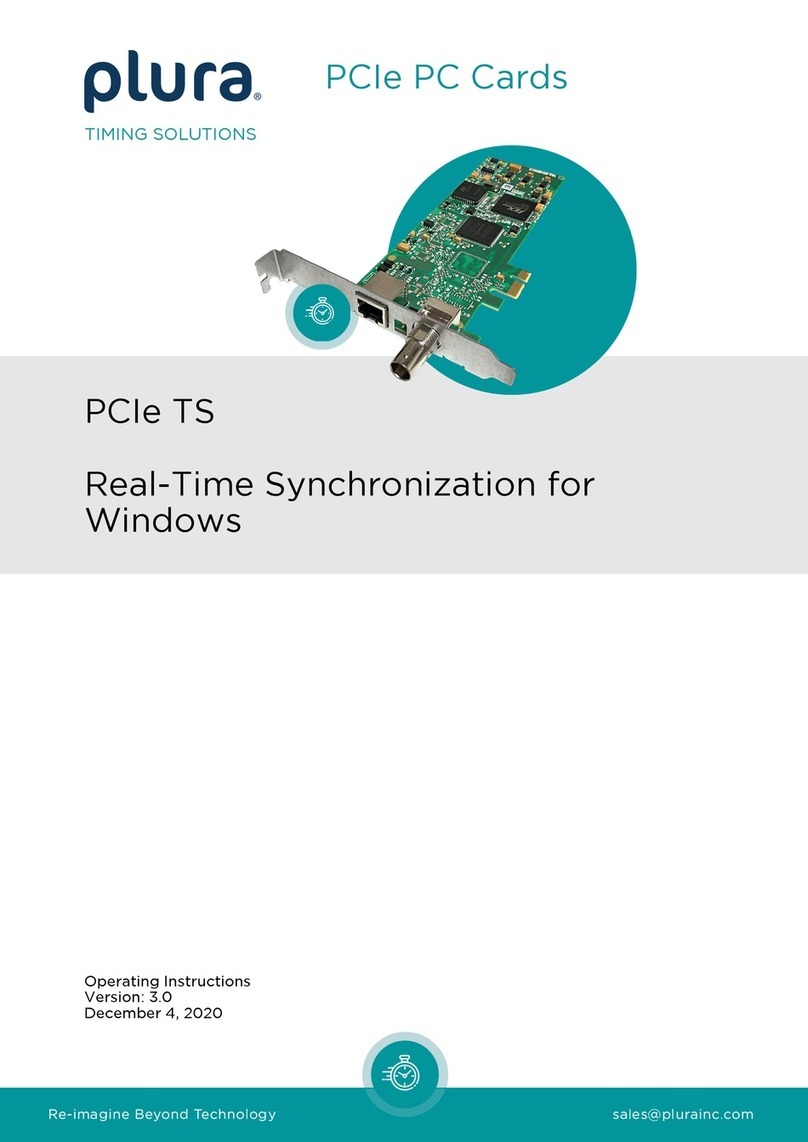Operating Manual PCIe 3G, LV, L
Page 7
B Functions
B1 Overview
Models
The PCIe 3G, LV, L are Time Code reader boards for PC’s with a PCI Bus. This is an easy,
fast, professional, and technically advanced way for the user to integrate Time Code into its
applications. The board has its own processor system with a register set for data transfer.
Thus, the critical time routines are completely decoupled from the PC’s CPU.
The PCI / PCIe board range consists basically of the following models:
PCIe 3G High-Speed LTC, DVITC and ATC reader, 3G/HD/SD video, PCIe bus
PCIe LV High-Speed LTC and VITC (CVBS video) reader, PCIe bus
PCIe L High-Speed LTC reader, PCIe bus
And the discontinued models:
PCIe HD High-Speed LTC, DVITC and ATC reader, HD/SD video, PCIe bus
PCIe D High-Speed LTC and DVITC (SD video) reader, PCIe bus
PCI HD High-Speed LTC, DVITC and ATC reader, HD/SD video, universal 3.3V
/ 5V PCI bus
PCI D High-Speed LTC and DVITC (SD video) reader, universal 3.3V / 5V PCI
bus
PCI LV High-Speed LTC and VITC (CVBS video) reader, universal 3.3V / 5V
PCI bus
PCI L High-Speed LTC reader, universal 3.3V / 5V PCI bus
Variants of the models are available upon request.
LTC reader
Reads Linear Time Code according to ANSI/SMPTE 12M-1995. Reader accepts slow and
high speed from 1 to 2500 frames per second (fps), in forward and reverse directions. Simul-
taneous decoding of time and user information. Input 100mV to 5Vpp, balanced or unbal-
anced, 2 x RCA connector. Automatic detection of the frame rate (can be switched off).
VITC reader
Reads Vertical Interval Time Code according to ANSI/SMPTE 12M-1995. Reader accepts
VITC from still picture to search speed. Simultaneous decoding of time and user information.
Automatic adaptation at the VITC data level. 1 x BNC connector, 75 termination can be
switched off. Automatic VITC lines detection, but a single line, 2 lines or a range of lines can
be selected as well. Automatic detection of the frame rate (can be switched off).
DVITC reader
Reads Digital Vertical Interval Time Code according to SMPTE 266M-1994. Automatic level
matching at DVITC data level can be selected. Simultaneous decoding of time and user in-
formation. Input SD video (4:2:2 component, SMPTE 259M-1997), 1 x BNC connector with
75 termination. Automatic DVITC lines detection, but a single line, 2 lines or a range of
lines can be selected as well. Automatic detection of the frame rate (can be switched off).




























